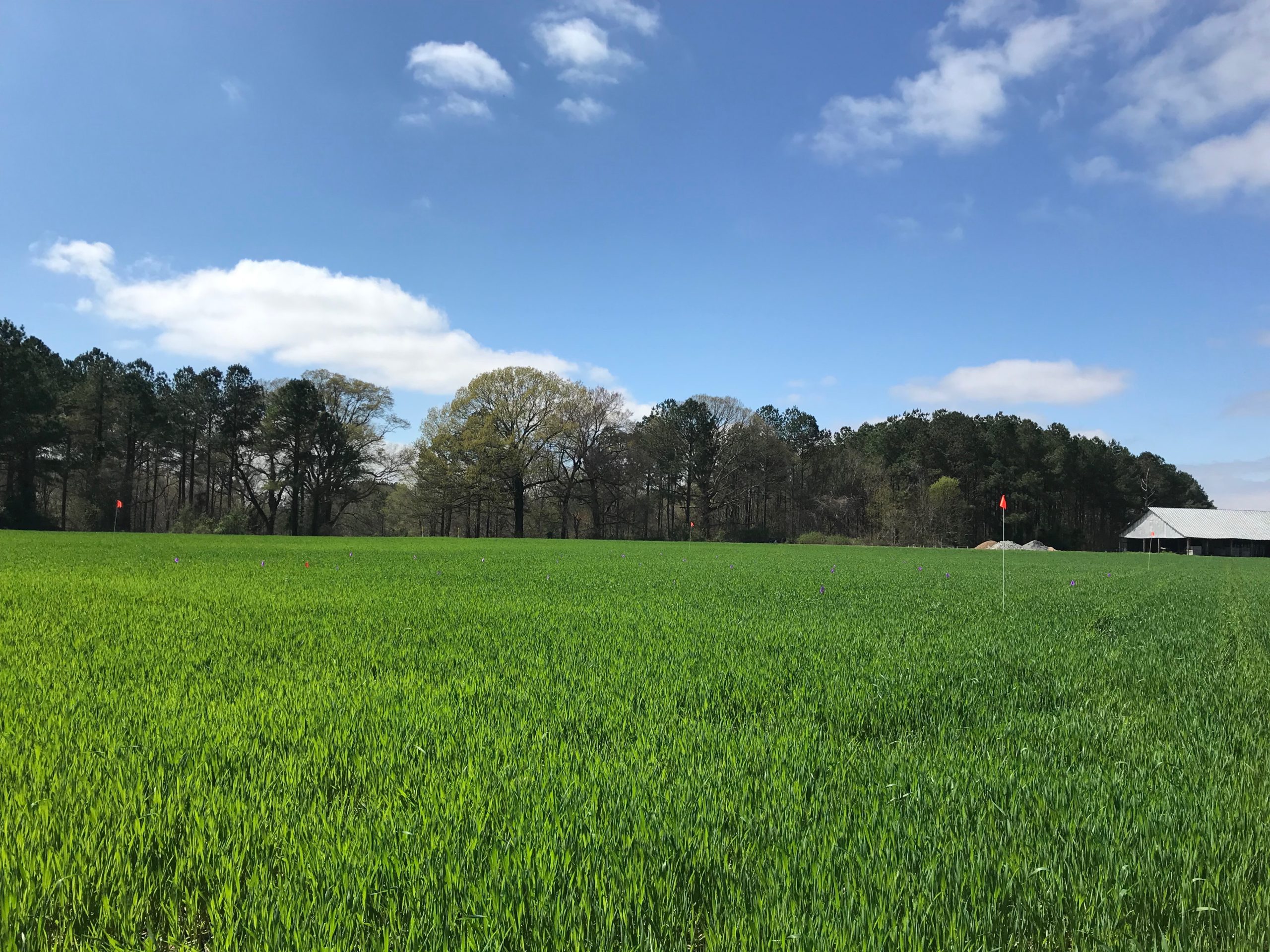**Posted on behalf of Lindsay Stephenson, Haywood County Extension Agent**

As the warmer spring days approach, and hopefully some drier days ahead, planning your next steps on your wheat crop is probably on your to-do list. I spent some time earlier this week reaching out to Extension Agents and Specialists to get their opinions on some commonly asked questions. Below are answers to those questions to help you in your decisions about your wheat.
How does the wheat look in Weakley County?
Jeff Lannom, County Director and ANR Agent, UT Extension Weakley County
The wheat in Weakley County looks pretty decent when you consider the amount of precipitation that we have received since November 1st, somewhere between 27” to 30” depending on location. Approximately 70-80% of wheat acres had top-dress nitrogen applications applied, but with saturated soil conditions there is a good bit of yellowing based on field location, as well as internal and surface soil drainage.
Has the rain hurt my yields?
Jeff Lannom, County Director and ANR Agent, UT Extension Weakley County
Wheat is typically considered a dryland crop and not fond of “wet feet”. However, when you consider the 2018-2019 crop and the same November 1 thru March 30, rainfall data, they are almost identical. Even with the amount of rainfall in 2019, the county average wheat yield in 2019 was one of the highest on record.
Tyson Raper, Ph.D., Cotton and Small Grains Specialist, UT Extension
Just as Jeff said, wheat is not considered a crop that likes ‘wet feet’ but I still think we have very good yield potential. My biggest concern is the impact the wet conditions have had on nitrogen timing; I know many were able to get across fields at the end of last week, but I have heard from several that are still waiting to get their second shot of nitrogen out. I’m not ready to cut rates just yet- but getting that second shot out within the coming week is going to be very important to protect yield potential.
I’ve got aphids in my wheat. Should I consider applying an insecticide to protect the flag leaf?
Scott Stewart, Ph.D., IPM Specialist, UT Extension
You’re probably too late to get much benefit from treating for aphids at this time. Aphids rarely directly cause yield loss. The primary benefit of controlling aphids is the prevention of barley yellow dwarf virus (BYDV), which they transmit while feeding. By this time of the season, aphids are generally pretty common and the damage has already been done. Fall and late winter management of aphids, preventing the build-up of aphid numbers on small wheat, is best to prevent yield loss from BYDV. Once we get very far into March, even if aphids continue to transmit BYDV, it will have little or no impact on yield.
It looks like we may have a window to get over our wheat by the end of the week. Should I apply a fungicide to wheat now (Feekes 7-8)? If so, what would you recommend?
Heather Kelly, Ph.D., Plant Pathologist, UT Extension
If no disease present, then no fungicide is recommended. Best results I’ve gotten from fungicide is at flag leaf or waiting until bloom to apply a fungicide but earlier disease development would warrant an earlier fungicide application.
Should I be considering cutting my costs on wheat this year?
Danny Morris, Area Farm Management Specialist, UT Extension
No, producers should be looking to increase their revenues on their wheat crop by bolstering yield, which in a year like this is possibly as much about lowering their overall loss on the crop as it is about making more money per acre. Farmers must reduce their per acre expense by ensuring they are paying the most competitive price possible for all inputs and not by eliminating applications. I have run the numbers on terminating the crop and switching over to corn acres, but I believe the costs incurred up to this point are too much for the corn crop to eke out much more of a profit than a double crop mix with the prices we have today even with a 25% yield reduction in wheat.
In closing, Jeff says it best “you just cannot outguess wheat and you do not know what you are getting until you have weighed it across the scales.” Over the next few days with the chances of sunshine and warmer temperatures, this might be what could move this crop in the right direction.

